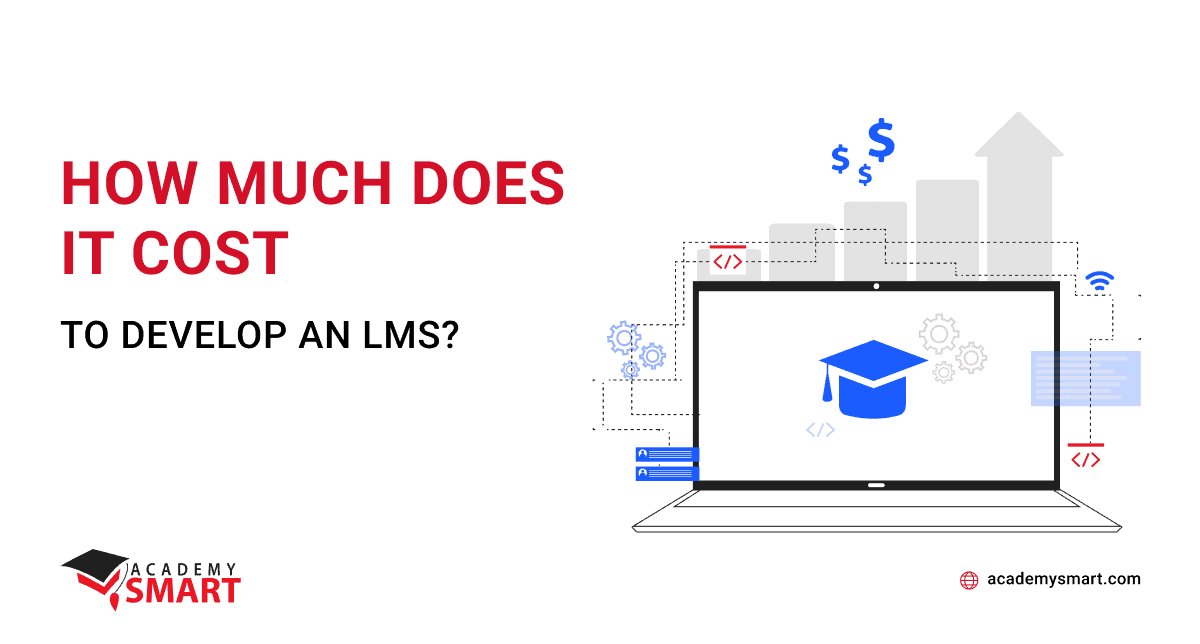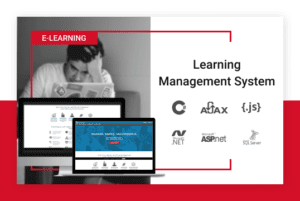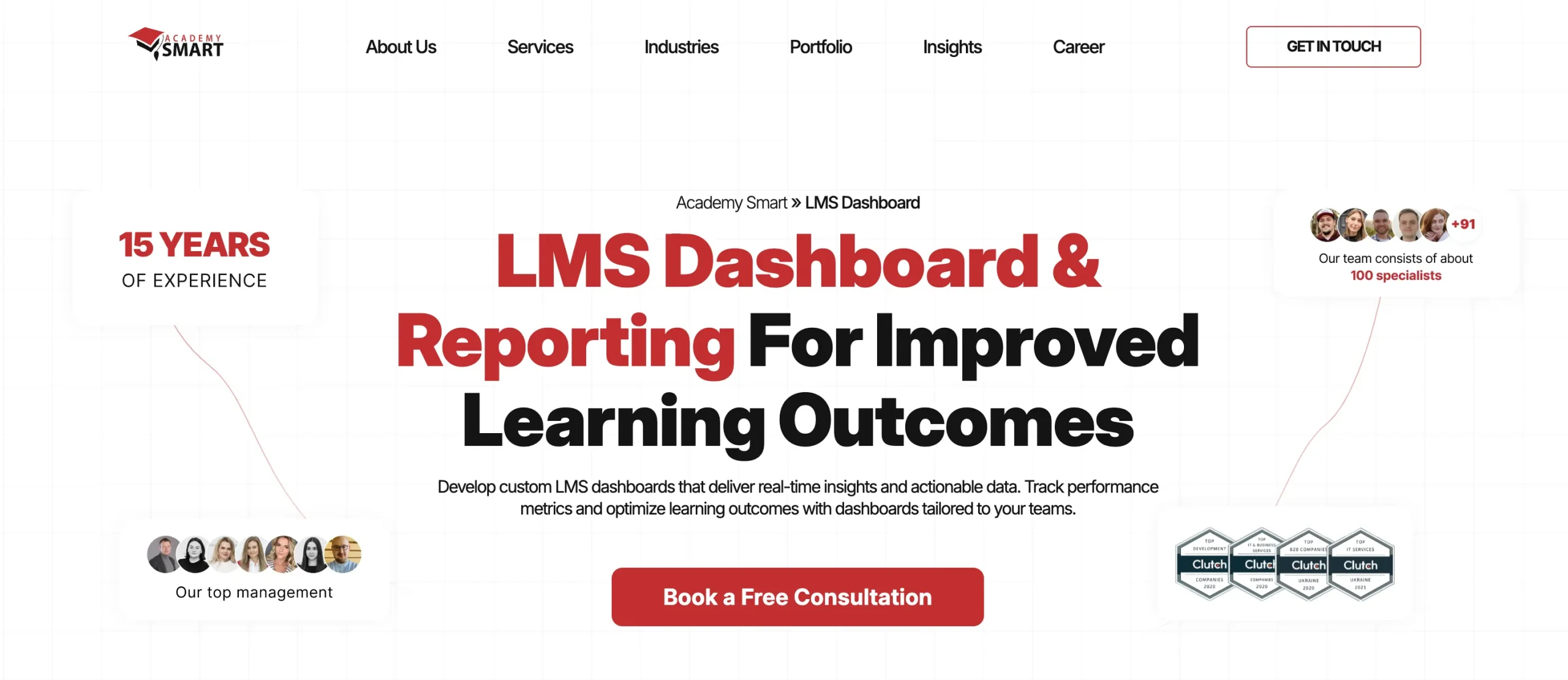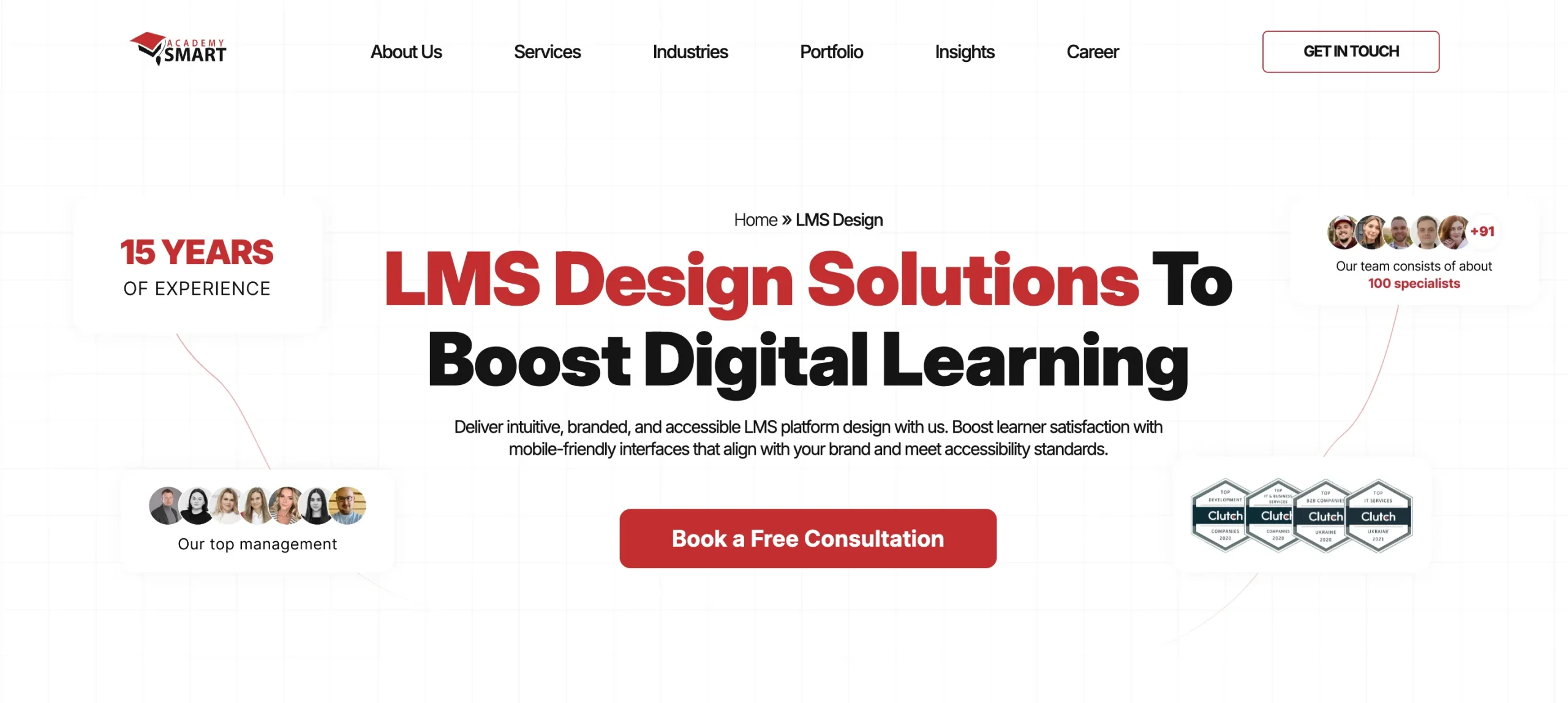
How Much Does It Cost to Develop an LMS
Contents
The LMS market in 2022 offers a large variety of complete solutions and offers to produce an LMS with specified options. Practice shows that estimating how much an LMS costs based on an advertising brochure or its description on the developer’s website usually leads to a mistake in expectations of the actual price. And the development and implementation of a learning management system in the work processes of the company or institution cost much more than was initially planned.
It is essential to understand that choosing such a complex and dynamic information system as an LMS requires special attention. After all, it should fully meet the requirements of its future users and solve the problem of practical training. No wonder poor implementation, especially the absence of certain features, leads to discontent with the learning management system and additional costs for its improvement or total replacement.
That is why we decided to dedicate this guide to highlighting the LMS development cost and the hidden costs that inevitably attend LMS integration into workflows.
Please read our article on what LMS means in education: What does LMS Stand for in Education
LMS pricing comparison
Setting your goal allows you to find the best solution at a fair price.
First of all, decide who you plan to train and how. What technology would you like to make your LMS work, and whose technical assistance might you need to set up and maintain the e-learning system? In other words, you should be clear about who will be your audience and how often they will access your courses.
Think about how you envision the user’s learning path. Develop the course structure of your learning portal, and define the role model of rights and liabilities for different user groups. Of course, to the extent that you elaborate your wish list and consider the developers’ recommendations, the more productive the time spent in the LMS by teachers and learners will be. Most importantly, knowing what you need will help you navigate the market for e-learning tools and choose the right solution.
LMS Pricing Models
A large selection of LMS software is available in a wide price range. What should you look out for in particular?
In short, you can get off-the-shelf software in a box for little money, but you can neither extend its functionality nor scale the processes in the future.
On the contrary, some offers imply a long development time and high expert fees. But in this case, you can get a product that will fully meet your requirements and have unlimited possibilities for upgrading and expansion. At the same time, possessing the intellectual rights to it, you can return your investment after a while, using it to generate income.
Some solutions offer to avoid constructing an LMS infrastructure and server maintenance. In other words, you rent the computing capacity of cloud providers and use the facilities already prepared by the cloud LMS vendors. In this case, you pay for the time spent by the cloud to run your LMS. Or, as is more common, you pay a rate that depends on the number of active users.
The apparent advantage of a cloud-based LMS is the reasonably rapid speed of its implementation in the learning process. On the other hand, built-in functionality is developed by cloud providers based on their economic considerations. It means that some of the critical features for your type of e-learning may not be present in a cloud LMS. However, no one can tell you exactly when it will appear or if it will appear at all, even after you contact the technical support team.
Now let’s look at standard LMS price models and point out the advantages and disadvantages of each.
- License fee.In this case, you purchase the right to use the software product freely to the extent you need it.Note that the licenses may be open-ended, which implies a one-time payment for the product’s cost and its purchase. Typically, subsequent updates and upgrades are not included in the license price and must be paid for separately.There are also subscription licenses that allow you to use the LMS for a certain period: month, quarter, or year. In some sense, the regularity of payment is compensated by the system updates, and technical support is usually included in its cost.
Licenses for an off-the-shelf LMS have always been a relatively expensive purchase and, depending on the functionality, and technical implementation, can have a bill of several thousand dollars. On the other hand, it is definitely a good and cost-effective solution in industries where increased data security requirements are essential, as well as a large number of users and a variety of training materials. That is why large companies prefer to purchase off-the-shelf software licenses or create unique licensed software.
- Pay-Per-Learner.It is a simple approach to pricing the use of cloud LMS capacity. It works well when you have a regular number of learners in your company, and the learning process is imperative. In this case, you regularly pay a fixed amount for a specific number of LMS users.Among the apparent disadvantages of this approach is the actual overpayment for those users who are registered in the system but are not active. In addition, increasing the number of users multiplies the cost of maintaining the LMS.
- Pay-Per-Active-Users.An equally popular alternative to the previous model is designed to compensate for its significant drawbacks. In this case, you can have an unlimited number of users, but you pay for the volume of activity you expect to see in your system, clearly, within the price plans provided by the vendor.It makes the LMS somewhat cheaper to maintain. However, it does not exclude the possibility of paying for unused current capacity if the number of active users has not reached the level you expect. Regarding this payment model, it is worth recommending a careful comparison of the cost of fees for different time intervals. If you have a stable learning process throughout the year, paying for the annual volume is better, as monthly fees for the same number of users are usually more expensive.
- Pay-as-you-go.This price model exists for those users who are unsure of the steady demand for their training courses. That is, it pays for each specific fact that the user accesses the LMS at a fixed monthly rate.Despite the outward attractiveness of this model and its relative cheapness in the case of a small number of users, in practice, it is not so popular, as it can cost a lot in the case of a sharp increase in the number of users. It is considered more suitable for online course sellers than for corporate training.
Also, we have to say a few words about such a free option as an open-source LMS. In contrast to proprietary LMS, anyone can freely use the code of the software, modify it and customize it to their needs. Of course, open source soft is not a pricing model, but it is a good alternative that can significantly reduce the cost of LMS development, which we will discuss later.
One-time, recurring and hidden costs for the maintenance of LMS
An LMS is a complex information system that requires specific skills and technical means for installation, configuration, and maintenance.
If your company does not have a competent person on staff, you should consider the associated costs of technicians to ensure that your e-learning system is up and running.
Another item of expenditure can be the maintenance of the server where your LMS will be hosted. It is essential primarily because choosing the right hosting will ensure that your LMS runs smoothly and securely for your users’ data in the future. By the way, choosing the right technical solution may also require paid advice from IT specialists.
It may sound strange in 2022, but not all LMS developers offer a mobile version of their product as part of the basic package. Or their platform doesn’t have built-in course creation tools, which can lead to additional, sometimes substantial, costs later.
Occasional but possible costs include extending the functionality of the training system, such as integration with enterprise CRM or ERP systems. If there are plans to connect third-party services to the paid API, such as Amazon, Dropbox, Grammarly, etc., regular payments of their subscription fees should be added to the cost estimate.
Also, an unplanned expenditure item can be the design and branding of the LMS courses. It often happens in cases where the training system has the necessary features but has an uncomfortable or inappropriate graphical interface for the target audience. In addition, a branded product undoubtedly enjoys greater credibility with users.
Finally, we should note that sometimes spending time and money on the endless tweaking of an actual LMS can prompt management to draw the only correct conclusion that they made a wrong choice earlier. And now, it would be cheaper to replace the e-learning platform than to continue fixing the problems of the old one.
How much does it cost to build a custom LMS
Despite various types of LMS on the market, the best choice is to develop a custom LMS in some cases. It is a good solution if:
- you clearly understand the objectives of your LMS and know your audience;
- you have a large number of users and anticipate the need to scale in the future;
- you want complete control over the process of creating training courses and a comprehensive analytics and reporting system;
- you are particularly concerned about data security;
- you require seamless integration with third-party software and substantial compliance with technical standards and regulations, including outdated ones;
- you value a fast learning curve and user-friendliness of interface;
- you appreciate corporate identity and a sense of corporate unity;
- you plan to recoup your investment through employee training and ownership of the intellectual product.
The cost of creating an LMS from scratch
Yes, developing a custom LMS from scratch is a significant financial investment, at least at first glance. In addition, development takes time, so it does not involve instant integration into company workflows. To ensure it’s worth the money, consider the benefits, which are not so obvious.
- You get a product that does only what you need and exactly how you need it. You own the product as your intellectual property and can make money from it.
- You get a system that can be developed and scaled how you need it.
- You get a team of developers responsible for creating a product you would be delighted with. Experienced developers can bring ideas and solutions at the planning stage, which will solve the problems you have not yet had time to formulate. In the end, the result may be even better than you expected. And from a practical point of view, it’s easier for programmers to write clean code from scratch than to correct imperfections of the predecessor’s code.
- In the long term, the investment in an on-premise or hosted custom LMS platform will be much lower than the potential cost of maintaining a SaaS LMS over the same period with the payment models we discussed above.
- If you are developing a cloud-based LMS, you can take advantage of a modern multi-tenant architecture, which will also help to reduce the cost of maintaining it.
To estimate how much it costs to develop an LMS, let’s briefly outline the participants in this process and their contribution to the overall effort. A typical team for an LMS project includes:
- A project manager.
- Business analyst.
- UX/UI designer.
- Frontend and backend developers.
- DevOps engineer.
- QA tester.
- Other specialists as needed.
They create the administrative and user side of the LMS and the user interface and develop and provide access to various databases, functions, and reports.
IT specialists’ work takes up to 1500 hours to develop a fully functional white-label LMS from scratch. Thus, the cost of custom LMS development will be about $ 50,000, but more precisely can be said only after the calculation in each case.
 |
 |
Open source LMS customizing
The open-source LMS customization service can significantly reduce the time needed to develop an e-learning platform. As most of the typical LMS features have, in fact, already been created and are available free of charge, the development company’s efforts are more focused on the configuration of a suitable user interface, integration of third-party software, and development of unique features. The result is as good as developing an LMS from scratch and, notably, cheaper.
Now you can compare payment models and plan the expected outcome, keeping the future in mind. You can, for example, calculate how profitable it would be to use cloud technology in the long term.
It would help if you also weighed whether an off-the-shelf, low-cost learning application will meet the needs of your learners in 10 years. Are you prepared to periodically update your e-learning software completely? How will the increase in the number of users and learning content eventually affect the cost of your e-learning content? To avoid overpaying, will you ultimately migrate from a cloud server to your own?
You might also consider why not recoup the funds you plan to invest in developing your e-learning platform. A user-friendly, flexible and scalable LMS solution is a sought-after commodity not only in the academic sphere. Many business companies may pay good money to increase the efficiency of their employees.
Academy Smart offers expert assistance in evaluating and developing e-learning platforms of any level of complexity. We are happy to discuss your goals and assemble a team of professional developers to help you achieve them.
LMS development cost: Frequently Asked Questions
How to Choose an LMS
Check our complete guide on how to choose an LMS in 4 steps.
Which LMS is more expensive
The cost of LMS should be compared comprehensively, considering the number of users, their growth dynamics, the range of available functions and reports, and technological solutions. Off-the-shelf LMSs can be inexpensive when purchasing a license or monthly subscription but cost more than a custom-made LMS in the long run.
Book a free consultation

Reach out to start talking today!











